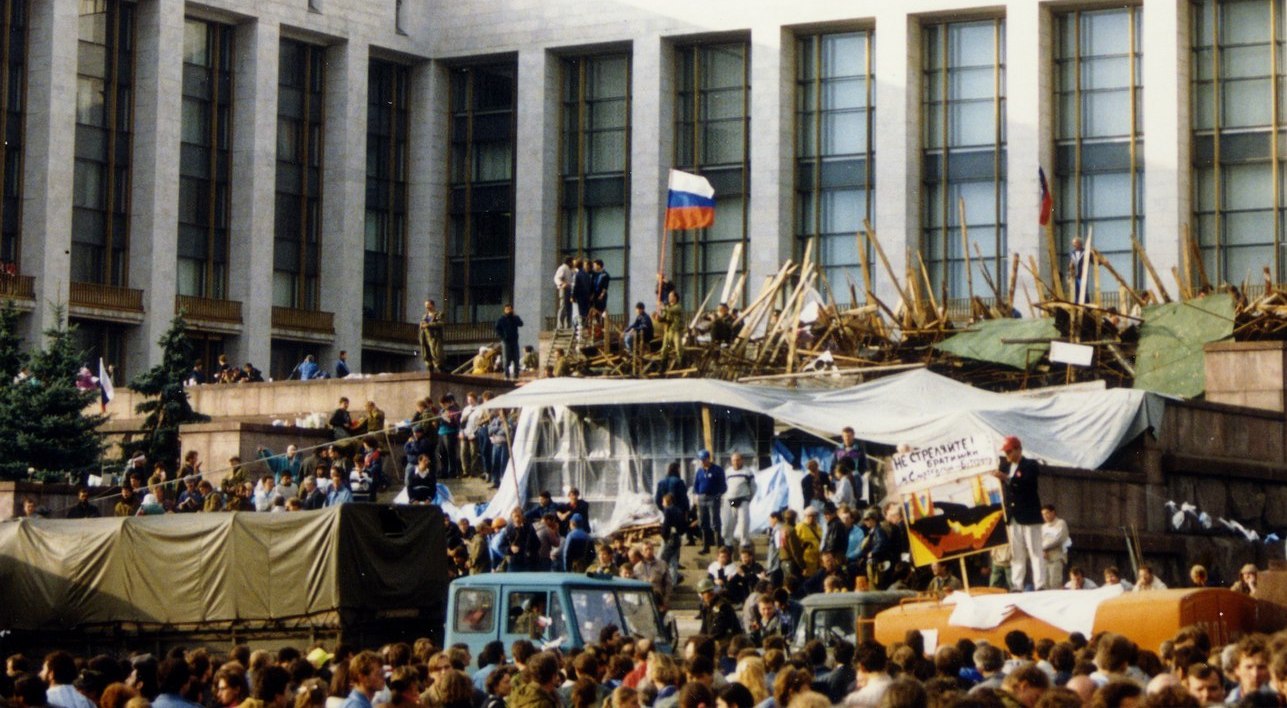This month marks the 30th anniversary of the collapse of the Soviet Union. The most powerful deformed workers’ state was collapsing into chaos as supposed communists were looting the state and its assets, cheered on by the imperialists of the west. Capitalism reared its ugly head, and the workers of the Soviet Union had to pay the price.
The nature of the Soviet Union
The Russian Revolution of 1917 was the greatest event in human history. For the first time in history, the oppressed didn’t just rise up, but they rose up, took power and held on to it. Even the combined forces of all the world’s imperialist nations failed to dislodge the new workers’ state.
The Russian Revolution should have been the beginning of the world revolution, but for reasons that we can’t go into here, this didn’t happen.
Victory in the civil war came at a heavy cost. Russia was never a rich nation, but after a world war and a civil war, both industry and agriculture were in tatters.
The isolation of the revolution in this state of economic backwardness laid the foundation for the rise of the bureaucracy. By the end of the 1920s, the workers’ state had degenerated into what Trotsky termed a deformed workers’ state. Within the party and the state machinery, the new bureaucracy, made up largely of enemies of the revolution of 1917, expropriated political power from the working class and the peasantry.
“Two opposite tendencies are growing up out of the depth of the Soviet regime… To the extent that, for the benefit of an upper stratum, it [the bureaucracy] carries to a more and more extreme expression bourgeois norms of distribution, it is preparing a capitalist restoration. This contrast between forms of property and norms of distribution cannot grow indefinitely. Either the bourgeois norm must, in one form or another, spread to the means of production, or the norms of distribution must be brought into correspondence with the socialist property system.” (Trotsky, Revolution Betrayed, Ch9)
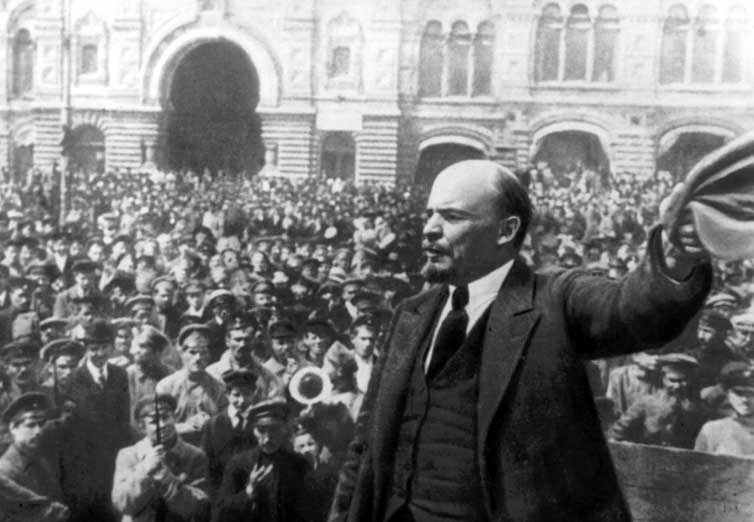 The Russian Revolution of 1917 was the greatest event in human history. For the first time in history, the oppressed didn’t just rise up, but they rose up, took power and held on to it / Image: public domain
The Russian Revolution of 1917 was the greatest event in human history. For the first time in history, the oppressed didn’t just rise up, but they rose up, took power and held on to it / Image: public domain
This new bureaucratic caste was living off the backs of the workers in a way that closely resembled the capitalists of the west. They had villas, luxury cars, mink coats, jewellery, expensive watches. But of course, they acquired their wealth not through private ownership, but through looting the state's coffers.
This was also why they had to stifle all kinds of democratic discussion. Because the moment that the lid was lifted, the privileges of the bureaucracy would become the target of criticism. The capitalists, at least historically, played a progressive role in saving and investing, and received their profits in return. The bureaucracy, on the other hand, played no such role. It was completely parasitic.
The petty bureaucrats sitting at all levels of administration had no interest in developing the economy. They were just interested in their own position. So, if their superiors demanded one tonne of nails, they delivered one tonne of nails, whether these nails were of any use to a carpenter was a completely secondary consideration. The more demands the bureaucracy centrally were making, the worse the cheating got.
A modern economy is a delicate organism, requiring a balanced allocation of resources between different branches. The bureaucracy always struggled to maintain this balance, but the more the revolution receded into memory and the greater the complexity of the economy, the worse the situation became.
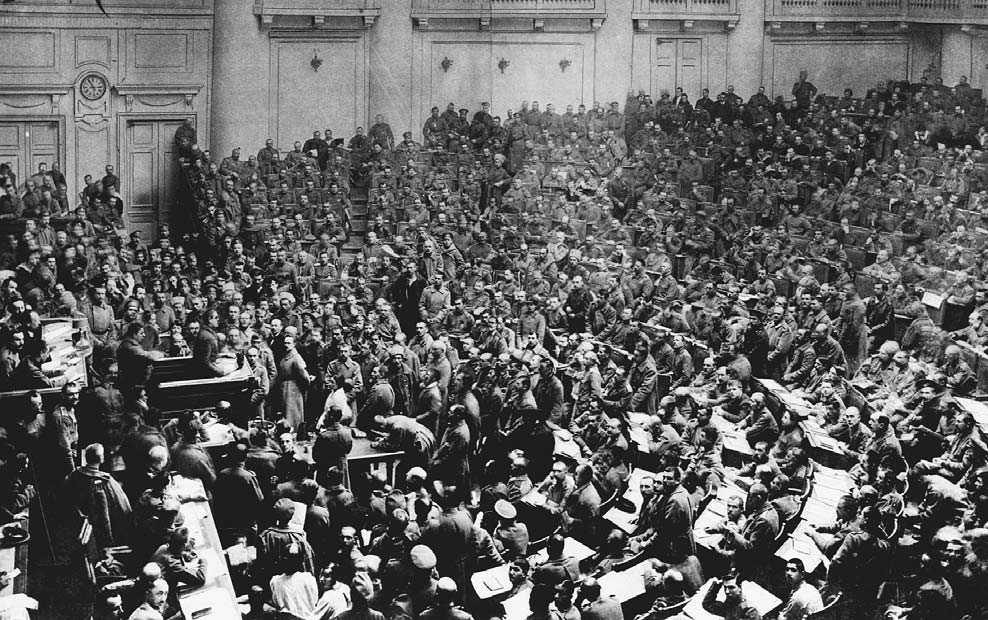 The bureaucracy went from being a relative fetter on the development of the economy to an absolute one. That is, under workers' control the economy could have developed faster and in a more sustainable way in the whole period / Image: public domain
The bureaucracy went from being a relative fetter on the development of the economy to an absolute one. That is, under workers' control the economy could have developed faster and in a more sustainable way in the whole period / Image: public domain
Instead of leading the world towards socialism, the new bureaucracy blocked further development, and even acted as a brake on revolutionary developments elsewhere. The reactionary state bureaucracy was feeding off the demoralisation of every defeated revolution, which strengthened its hold on power. Just like the trade union bureaucrat in the West fears the workers more than the bosses, so the state bureaucrat in the Soviet Union feared the Russian worker more than the Western imperialists.
The bureaucracy went from being a relative fetter on the development of the economy to an absolute one. That is, under workers' control the economy could have developed faster and in a more sustainable way in the whole period. But even under the bureaucracy from the 1930s to the 1960s there was some development, sometimes even rapid. But by the end of the 1970s, the economy was stagnating and a collapse was around the corner.
Gorbachev’s attempts to reform
Mikhail Gorbachev became leader of the Communist Party of the Soviet Union (CPSU) in 1985. He reflected a layer of the bureaucracy that was attempting to reform to get out of the economic impasse. Gorbachev spoke about workers' control and democracy, but none of it could be implemented as long as the bureaucracy had a stranglehold on society.
Indeed, to the bureaucracy the choice between workers' control and a return to capitalism was not difficult. They preferred capitalism. But in the beginning this was not a conscious choice. They were still reforming to attempt to preserve the existing system. Gorbachev was attempting to lean on the working class in order to curb the worst excesses of the bureaucratic caste, not to overthrow it, but to preserve the regime as a whole. As Ted Grant explained:
“This was the fundamental flaw in Gorbachev’s position. To encourage greater initiative and therefore greater productivity from the workers, while simultaneously defending the privileges and perks of the bureaucracy, was to attempt to square the circle.” (Russia: From Revolution to Counter Revolution).
Gorbachev emphasised that 'legitimate' privileges had to be maintained:
“We are fully restoring the principle of socialism: from each according to his ability, to each according to his work.”
If you wonder where this 'principle' comes from, it's a bastardisation of the principle of “from each according to his ability, to each according to his needs”. This is not an accident. It was the ideological justification for the rule of the bureaucracy.
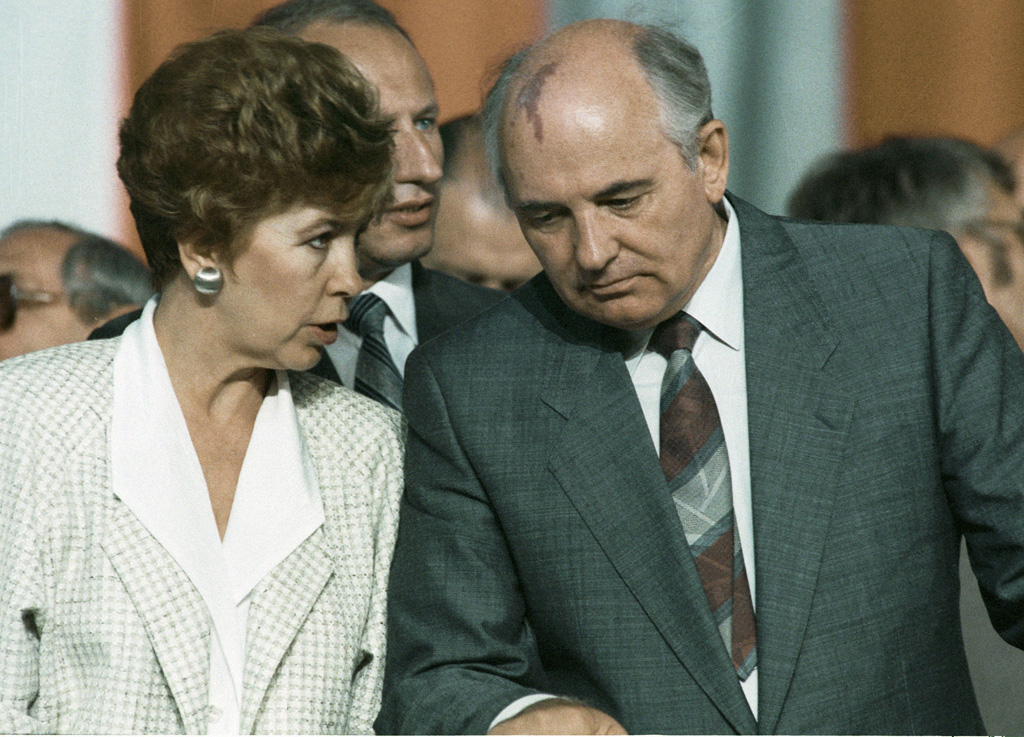 Mikhail Gorbachev reflected a layer of the bureaucracy that was attempting to reform to get out of the economic impasse / Image: kremlin.ru, Wikimedia Commons
Mikhail Gorbachev reflected a layer of the bureaucracy that was attempting to reform to get out of the economic impasse / Image: kremlin.ru, Wikimedia Commons
Some 200,000 of the most corrupt officials were sacked, but this was only scratching the surface of the 19 million strong bureaucracy. For the workers, the pressure increased. The reform programme meant a worsening of living standards and working conditions. Alcoholism became a serious problem, leading to workers being absent because of drinking. Attempts to restrict the supply of alcohol created a massive black market in illegally distilled alcohol, and had to be abandoned. At the same time the bureaucracy enriched themselves even more.
The state monopoly on foreign trade was relaxed in the second half of the 1980s. This provided tremendous opportunities for further looting of state assets. Companies were now allowed to keep part of the proceeds of foreign trade. In practice, this meant managers in export industries or middlemen pocketed a substantial part of the proceeds, which then found itself in bank accounts in the West. The simultaneous deregulation of banking helped this process along.
Khodorkovsky was an advisor of Yeltsin with Western connections. His career is illustrative of many of the new class of oligarchs. He worked as a full-timer for Komsomol (youth wing of the Communist Party) in 1986, then in 1987 he started a ‘Centre for Scientific and Technical Creativity of the Youth’, linked to Komsomol that traded with the West. In just over a year this led him to founding a bank, Menatep, with the help of Western bankers. This bank quickly became one of the largest private Russian banks and through which Khodorkovsky got control of Yukos, the oil and gas company. By the end of the 90s, Khodorkovsky had a controlling share in 30 companies, and by 2004, he was the 16th richest man in the world, worth $16 billion.
The economy managed a temporary spurt in growth but then things quickly took a turn for the worse. Food was left rotting in the field, theft and embezzlement got worse. The black market became the main source of goods for factories, shops and consumers. Shelves were empty, and by 1990, 70 million people were living on the breadline. A wave of strikes gripped the Soviet Union, culminating in a miners' strike of 300,000. There are reports of workers taking control of the mining towns during these strikes:
“The strike committee, in essence, became the authority in the towns. They were occupied with questions of trade, transport, maintaining order. From morning to night people who for a long time had been unable to get help or support from any other organisation came to the committees. And their members investigated each problem, consulted specialists, and helped where they could with medical treatment, repairs, job placement...” (Trud, 3 August 1989)
These actions by the workers carried the seeds of the political revolution. However, the working class didn’t have an organisation that could unite their struggles and allow them to impose their class demands on the situation. Instead, their struggle was diverted and became a pretext for further privatisation.
In 1990, The Soviet Weekly published a poll which claimed that only 15-20 percent of young people believed in socialism. The word now stank, tainted by the bureaucracy. Riots became common and the masses were losing their fear of the repressive apparatus of the state, even attacking the police and driving them back.
The widespread scepticism and disillusionment among people was reflected in political jokes such as “have we reached real communism yet, or is there worse to come?” Still, in 1990, more than 40 percent favoured a return to more centralised economic management and only 25 percent wanted a market-oriented system. So, the move to capitalism was not popular.
But the bureaucracy now seriously started to move towards capitalism. They had lost all confidence in 'socialism', that is in themselves, and were looking with awe and admiration at the West. Trotsky pointed out that the members of the bureaucracy would attempt to secure their position and that of their children by transforming themselves into capitalists. This is what now took place. Bureaucrats at all levels tried to grab hold of as much loot as they could get their hands on. Corruption was rampant. A programme of austerity was begun, including privatisation (initially of small business), and deregulation of prices and of wages.
Yeltsin enters the scene
By 1990, the State Planning Committee (Gosplan) was warning about a complete collapse in the economy. Yeltsin - a former politburo member who had been sacked for denouncing the bureaucracy and corruption - emerged as the leader of the pro-capitalist wing. He and his faction were pushing for faster ‘reforms’ to solve the situation.
The disintegration of the Soviet Union started in earnest and Yeltsin used his position as Chairman of the Russian Supreme Soviet to increase his own powers (vis-a-vis the government of the Soviet Union), creating a rival position of power to that of Gorbachev.
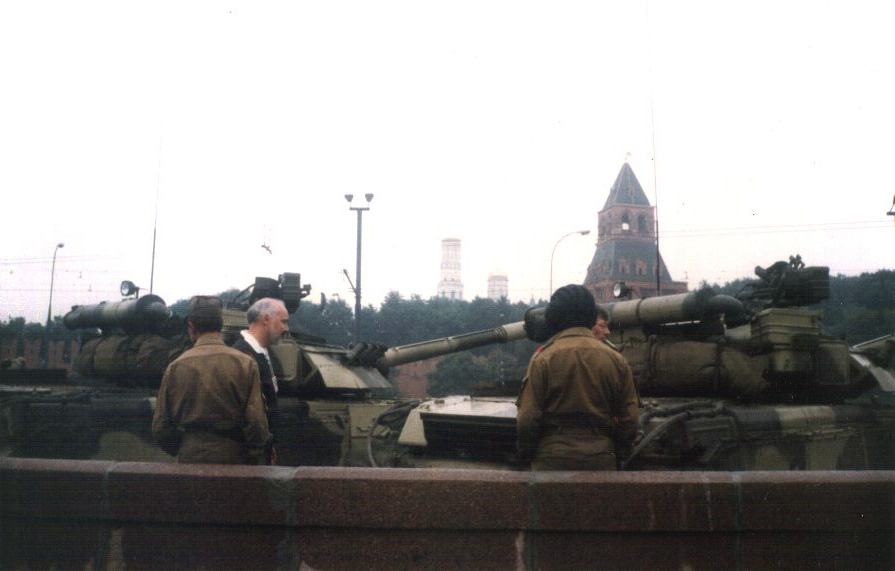 The hardliners launched a coup attempt to stop the ratification of the treaty that would grant further autonomy to the constituent republics / Image: public domain
The hardliners launched a coup attempt to stop the ratification of the treaty that would grant further autonomy to the constituent republics / Image: public domain
Gorbachev and his ministers had not decided to go over to capitalism. They stalled, attempting to balance between the pro-capitalist and the hardline wing of the bureaucracy. In 1990 Gorbachev went back on a number of pro-market reforms. In a speech, he attacked the bureaucracy but insisted that they were not moving to a market economy. After this, Yeltsin resigned from the CPSU. Gorbachev continued to attempt to balance between the two factions but the situation was moving out of his control. There were now two openly declared legal parties in the Soviet Union: the old party of the bureaucracy, CPSU, and an alliance of pro-’reform’ parties with Yeltsin at the head.
The market reforms failed to halt the collapse in the economy. Economic output in the first six months of 1991 was down by 10 percent compared to the previous year. There were further strikes in the coalfields.
Yeltsin won the presidency of the Russian Federation in June 1991. This was a decisive turn. At the same time, the smaller Soviet Republics were demanding independence. Gorbachev was forced to draw up a new Union treaty, to the outrage of hardliners. Gorbachev was now manoeuvring with Yeltsin against the hardline faction to pass the treaty, which would grant further autonomy to the constituent republics, including, of course, the Russian Federation. It would effectively have been the end of the Soviet Union.
The hardliners launched a coup attempt to stop the ratification of the treaty. Given the involvement of top level officials, as well as the KGB, they were remarkably poorly organised. The coup makers seemed to have been banking on Gorbachev either joining the coup or resigning in favour of his deputy, but he refused. The coup plotters issued an arrest warrant for Yeltsin, but were not actually capable of carrying it out. He evaded their grasp.
Yeltsin took advantage of the situation instead. He barricaded himself in the parliament building (the White House) and made an appeal for people to join him, which some 10,000 did. The coup plotters attempted an assault on the White House, but after skirmishes caused the death of a few protesters, they withdrew. Then the whole thing unravelled and the plotters were arrested.
Gorbachev emerged weakened. The hardliners had been routed and so Gorbachev could no longer lean on them against Yeltsin. He could no longer resist the onslaught. By the end of the year, the Union Treaty was forgotten, the Soviet Union was dissolved, and with it, Gorbachev's presidency.
Yeltsin and his faction did not suffer the same lack of determination as the coup makers. The CPSU was suspended on 29 August, a week after the collapse of the coup. Yeltsin then began dismantling the party, starting by nationalising all of its assets. Finally, the party was banned on 6 November.
With the Soviet Union gone, Yeltsin had now become unchallenged in his role as President of Russia and proceeded quickly to ‘liberalise’ the economy. He was granted emergency powers by the Congress of Deputies to carry out economic reforms, including deregulation.
The determining factor in this process was the absence of an independent movement of the working class. The workers were unable to play an independent role, and as a result the whole battle was fought between two wings of the bureaucracy: one who fought with the confidence and the backing of Western imperialism, and the other thoroughly demoralised and with no real plan. The hardliners were the defenders of a status quo, which had failed and no one believed in.
The workers could see no prospects in either wing. There were strikes and demonstrations but there was enormous confusion and a lack of genuine alternatives. A general strike call by Yeltsin got the backing of former British Conservative Prime Minister Margaret Thatcher, of all people, but very few workers adhered to it. The people that rallied to the Yeltsin camp were students, engineers and speculators who saw a material advantage in the return to capitalism. The passivity of the working class is what enabled Yeltsin and his wing to take control.
Yeltsin's coup
Although it appeared that the hardliners had been defeated, it didn't take long for opposition to emerge. Far from helping the situation of the working class, the new measures were making the situation rapidly worse. The removal of price controls in a situation of scarcity meant inflation shot through the roof. Prices rose by 300 percent in a month and by the end of 1992, inflation stood at 2,400 percent.
Russia had ended up with the worst of all worlds: the disadvantages of bureaucratic mismanagement combined with crony capitalism. The same shoddy goods were being produced, but now at vastly inflated prices. At the same time, wages were not being paid. Industries were standing still because of a lack of materials. The situation was getting desperate. This provoked mass protests outside the White House, forcing the government to double the minimum wage and raise pensions.
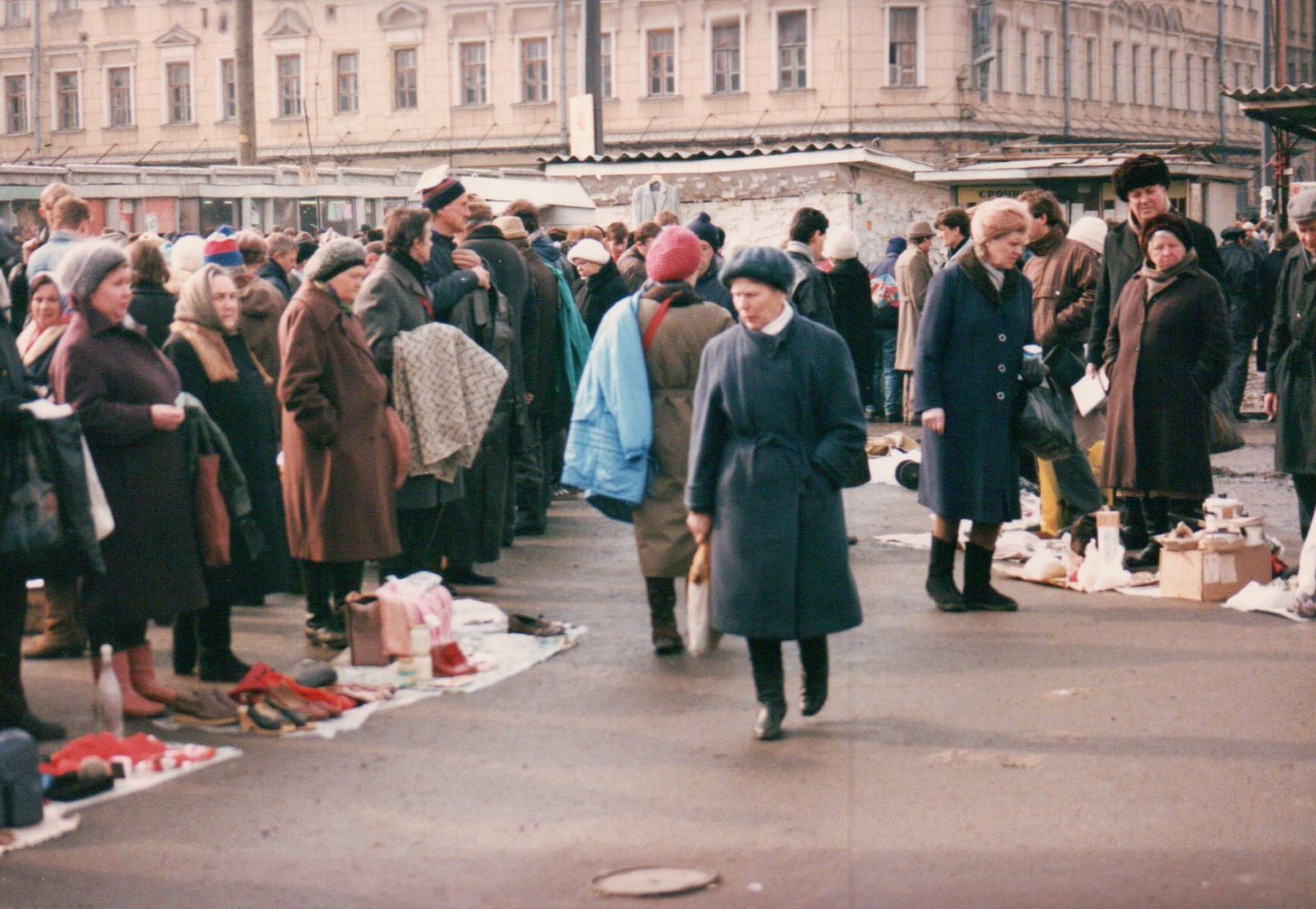 Far from helping the situation of the working class, the new measures were making the situation rapidly worse. Prices rose by 300 percent in a month and by the end of 1992, inflation stood at 2,400 percent / Image: Brian Kelley, Wikimedia Commons
Far from helping the situation of the working class, the new measures were making the situation rapidly worse. Prices rose by 300 percent in a month and by the end of 1992, inflation stood at 2,400 percent / Image: Brian Kelley, Wikimedia Commons
In his memoirs, Yeltsin comments that his goal was to make 'reform' irreversible. That is, he wanted to make the return to capitalism irreversible, but he was facing opposition. It became clear that the Congress was a serious block to further progress with Yelsin's 'reforms'. In the spring of 1992, Yeltsin had to beat a partial retreat from his shock therapy and sack his minister of Finance, Gaidar. This was a warning to Yeltsin. If he was to proceed he needed to dispense with Parliament and take on dictatorial powers instead.
For the best part of 1992, Yeltsin was wrangling with Parliament over a new constitution, but he failed to get an agreement. In December, Congress agreed to an April referendum on a new constitution in return for the resignation of Prime Minister Gaidar, who had made a comeback in June. But this agreement didn’t last. By March 1993, Yeltsin had moved to rule by decree, a move the constitutional court blocked, ruling it unconstitutional. Instead, Yeltsin became subject to impeachment proceedings, which he narrowly escaped.
Yeltsin now put all his efforts into the referendum. The imperialist powers were openly supporting Yeltsin and in April, just before the referendum, $42bn in assistance was agreed. This enabled Yeltsin to promise another increase in the minimum wage and pensions - a clear bribe. Yeltsin narrowly won the referendum, although the abstention rate was high and Yeltsin probably rigged the vote. Still, Yeltsin used the outcome as a pretext to move against his enemies.
In September, Yeltsin suspended Congress, and promised new elections under a new constitution written by himself. Immediately, Congress voted to impeach the president and remove him from office. Yeltsin re-appointed Gaidar and attempted to get support for the new constitution. He didn't have much success. 148 out of 176 regional leaders opposed his manoeuvres, including St. Petersburg city council. Western imperialism, of course, backed Yeltsin. They weren't so concerned with the legal or democratic niceties, but all the more with the destruction of the planned economy and the opportunities to loot the state owned companies.
Yeltsin besieged the White House, where the leaders of Congress had barricaded themselves. Yeltsin’s opponents made a half-hearted appeal to the masses. They had no willingness to launch a proper mass movement against Yeltsin's coup. Instead, they attempted to rely on the army and the secret service. They launched what amounted to a counter-coup. But there was no more willingness to defend the old order now than there had been the year before.
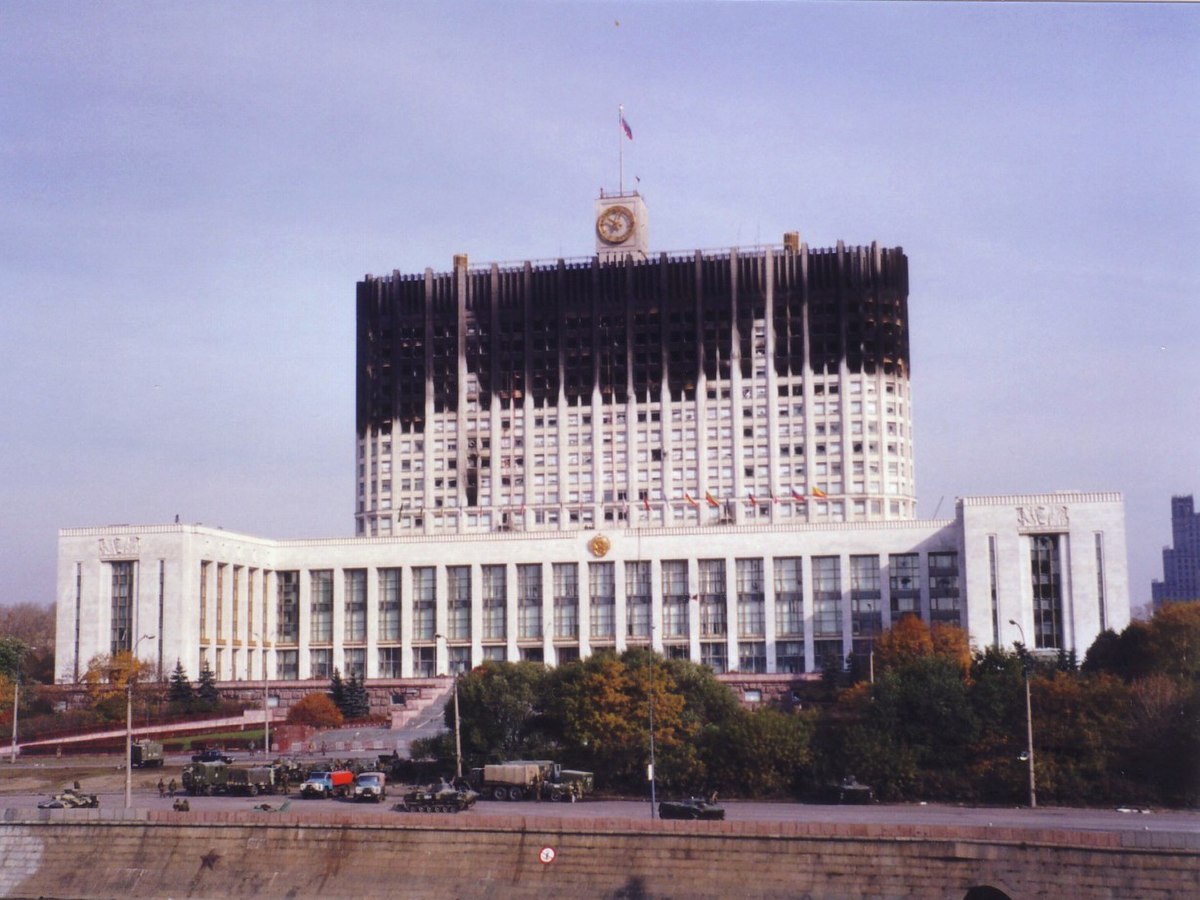
The workers of Moscow started to mobilise against the coup. On 3 and 4 October tens of thousands of protesters broke through police lines and reached the White House. But this wasn't sufficient to break the stalemate.
Instead, Yeltsin assaulted the White House, after bribing a number of deputies to abandon their posts. He attempted to command the army to do it. Out of an army of two-and-a-half million “not even one regiment could be found", Yeltsin complained in his memoirs. Eventually, a force was cobbled together from a mixture of army, KGB and interior ministry officers.
The seizing of the Parliament gave a powerful impetus to the move towards capitalism, but resistance continued. Yeltsin banned opposition parties and newspapers, he suspended local councils and sacked councillors and governors. Even the constitutional court was suspended. All in the name of ‘democracy’. The election to the renamed Parliament (the Tsarist name Duma was restored) was supposed to provide a legal cover for the manoeuvres, but Yeltsin's camp split into several different parties and the regime failed to achieve any stability.
For the next few years, the economic situation got worse. For a whole decade, the economy kept shrinking. In 1989, the total production of the economy was worth 1.46 trillion dollars, at the end of 1998, merely 800 billion, a fall of 44 percent. The productivity of the average Russian worker was 30 percent of the US level in 1992, but only 19 percent in 1999. The restoration of capitalism was an unmitigated disaster. The only comparable destruction of an economy was the defeated powers of World War II. Real wages fell by more than half. By the year 2000, 29 percent of the population lived in poverty.
The continued economic hardship provoked new movements of the working class, but they were betrayed. Many would put the date for the restoration of capitalism in Russia in 1991, but the truth is that the new regime had not yet stabilised. It was riven with contradictions and crises and the workers were still resisting.
A regime in crisis
The West was pushing further 'reforms': “more shock, more therapy", “no turning back for Russia” was the message. Yeltsin and his clique were happy to oblige, ensuring of course that they lined their own pockets in the process. Some of the dirty dealings have been revealed in the UK courts, as the oligarchs are battling out over the ownership of various companies. The Guardian in its reportage describes how Yeltsin “practically gifted state assets to a small group of well-connected businessmen” in return for help rigging the 1996 presidential election. Yukos, the oil giant worth $3bn, went to Khodorkovsky for $100m, for example.
This was the nature of the new ruling class in Russia. Wealth inequality is currently the highest among the major world economies. The wealthiest 1 percent in 2000 owned 54 percent of assets in Russia. In the US, this group owned a mere 33 percent. Today, the Russian oligarchs have slightly increased their share of the pie and own 58 percent.
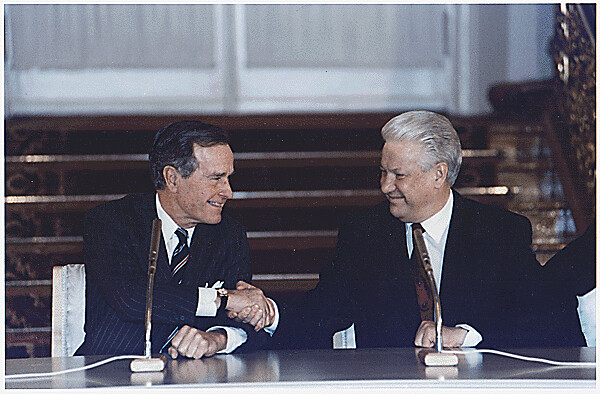 The West was pushing further 'reforms': “more shock, more therapy", “no turning back for Russia” was the message. Yeltsin and his clique were happy to oblige, ensuring of course that they lined their own pockets in the process / Image: public domain
The West was pushing further 'reforms': “more shock, more therapy", “no turning back for Russia” was the message. Yeltsin and his clique were happy to oblige, ensuring of course that they lined their own pockets in the process / Image: public domain
This was not lost on the workers, who were having to pay the price for the economic disaster. Unemployment didn't rise as quickly, but that was partly because companies kept workers on the books. They just didn't pay them. Months and months of back wages were left unpaid and were whittled away by hyperinflation. This prepared the way for a new wave of struggle.
The 1995 elections were a big defeat for the pro-capitalist parties, which lost something like half their seats. The CPRF gained massively, and the left had just short of half the seats in the Duma. This was a sign that the mood was turning in society. The following presidential election of 1996 was probably rigged, and if not, the West heavily intervened on behalf of Yeltsin, including providing him with funds at a crucial moment in the election campaign. But this did not achieve the much sought after political stability.
A massive strike wave followed in the autumn of 1996, including the setting up of 'salvation committees', which were Soviets in all but name. Factories were occupied and started to be run under workers' control. The movement came back again in 1998. The polls showed a big opposition to the market reforms. In January 1997 a poll showed that 48 percent considered socialism to be preferable to capitalism for Russia, with 27 percent thinking the opposite. If there had been a Communist Party present worth the name, this movement could have been generalised across Russia, and the workers could have taken power, but the CPRF leadership had other ideas.
The CPRF was massive and had widespread support, but its leadership was made up of remnants of the old bureaucracy, and like the hardliners of 1991-1993, it didn't actually have an alternative to capitalism. These leaders had no experience of mass work, being accustomed to intriguing in the corridors of power. The last thing its leadership wanted was the workers to be in charge. Therefore, they couldn't provide any alternative for the workers looking for a way out.
In 1991, the restoration was far from certain, and it could have been reversed. With the failure of the Communist Party, the lack of a subjective factor that could have led the workers to power, the regime managed to find that stability in a new leader, Putin.
The peculiar rise of Putin
By 1998, Yeltsin was a spent force. To top off the disaster of the economic situation and the way in which the state assets had been sold off for peanuts, Yeltsin's family was embroiled in a corruption scandal. He was unable to keep his own government together and his support in opinion polls stood at around 3 percent.
Yeltsin's successors were jostling for position, and, once again, there was a real risk that the Communist Party leader Zyuganov could win the coming presidential election. Although Zyuganov presented himself as a safe pair of hands, opposing state ownership, the oligarchy didn't trust that he could hold back the workers.
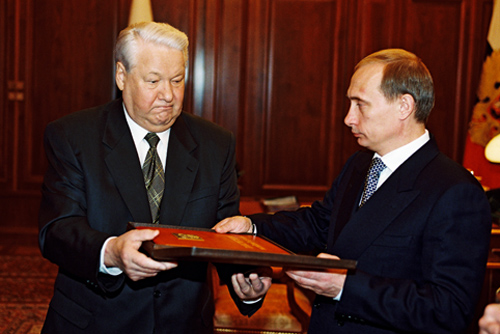 Yeltsin appointed Putin to his presidential staff in 1997, and then a year later head of the FSB, the successor to the KGB. Then again, a year later, he was the Prime Minister / Image: kremlin.ru, Wikimedia Commons
Yeltsin appointed Putin to his presidential staff in 1997, and then a year later head of the FSB, the successor to the KGB. Then again, a year later, he was the Prime Minister / Image: kremlin.ru, Wikimedia Commons
Putin emerged in this situation. He was a minor KGB official who had withdrawn from active service in 1991 and started a supposedly civilian career with the mayor of St. Petersburg, dealing with the city's foreign relations. It has been estimated that 80 percent of all joint ventures with the West included KGB officers. In St. Petersburg, he was involved in a corruption scandal involving $100 million worth of raw materials that had been exported by the city, supposedly in return for food, which never materialised. The suspicion was, of course, that Putin and other officials had been paid personally instead of the food being delivered.
Yeltsin appointed Putin to his presidential staff in 1997, and then a year later head of the FSB, the successor to the KGB. Then again, a year later, he was the Prime Minister. This should raise a few eyebrows. Of course, the whole of Russian society was in turmoil, which opened up new ways of advancement for people like Putin and others who had a particular lack of moral scruples. It also reveals the lack of reliable people at the top of the regime.
Still, Putin was clearly well connected, and probably never really left the service of either the KGB or later the FSB. Exactly how close he was to the secret service was to be revealed shortly after he was elevated to the role of Prime Minister in 1999.
The Chechen conflict had provided useful fuel to patriotic sentiment. A number of mysterious bomb blasts shook Russia in September 1999, a mere month after Putin took power. In addition to the blasts, a bomb was discovered and disarmed, but the FSB claimed it was part of a training exercise. The speaker of the Duma announced one of the bombings three days before it took place. Some clever agent had gotten the dates of the Moscow and Volgodonsk bombings mixed up.
Calls for an independent inquiry were blocked, and all the supposed perpetrators were either killed or sentenced in secret courts. One informal commission set up by a Duma member, Kovalev, was stopped in its tracks when two of its members were assassinated and one arrested. Defected FSB agent Litvinienko, who was assassinated in London in 2008, was one of the witnesses for the commission.
The blasts were blamed on Islamists, and coincided with an invasion of Dagestan (the neighbouring republic). Putin immediately ordered the bombing of Grozny in retaliation. The whole thing was a massive propaganda affair for Putin, who got lavish praise in the Russian press, which, of course, was controlled by the oligarchs.
In the following weeks, Putin's popularity skyrocketed. Yeltsin resigned in December, which made Putin acting president, and triggered elections in March, rather than June, when they were due. Putin won a majority in the first round. He didn't have a majority in the Duma, however, and the CPRF scandalously provided him with the necessary votes.
The Putin regime
What Putin represented was the consolidation of the capitalist regime in Russia. Undoubtedly, some liberals dreamed of a Western-style democracy, but what would be the basis of such a regime?
There were plenty of attempts to prettify the Yeltsin regime, but it wasn't all that different to that of Putin. As we have seen, Yeltsin did not hesitate to trample all over the constitution and elected assemblies when it suited him. He based his rule on a tiny clique of extremely corrupt oligarchs, to whom he handed over vast amounts of state property. He was determined to restore capitalism in Russia, and received the eager backing of the West for that purpose. But Yeltsin’s regime was one of crisis. It had no long-term future.
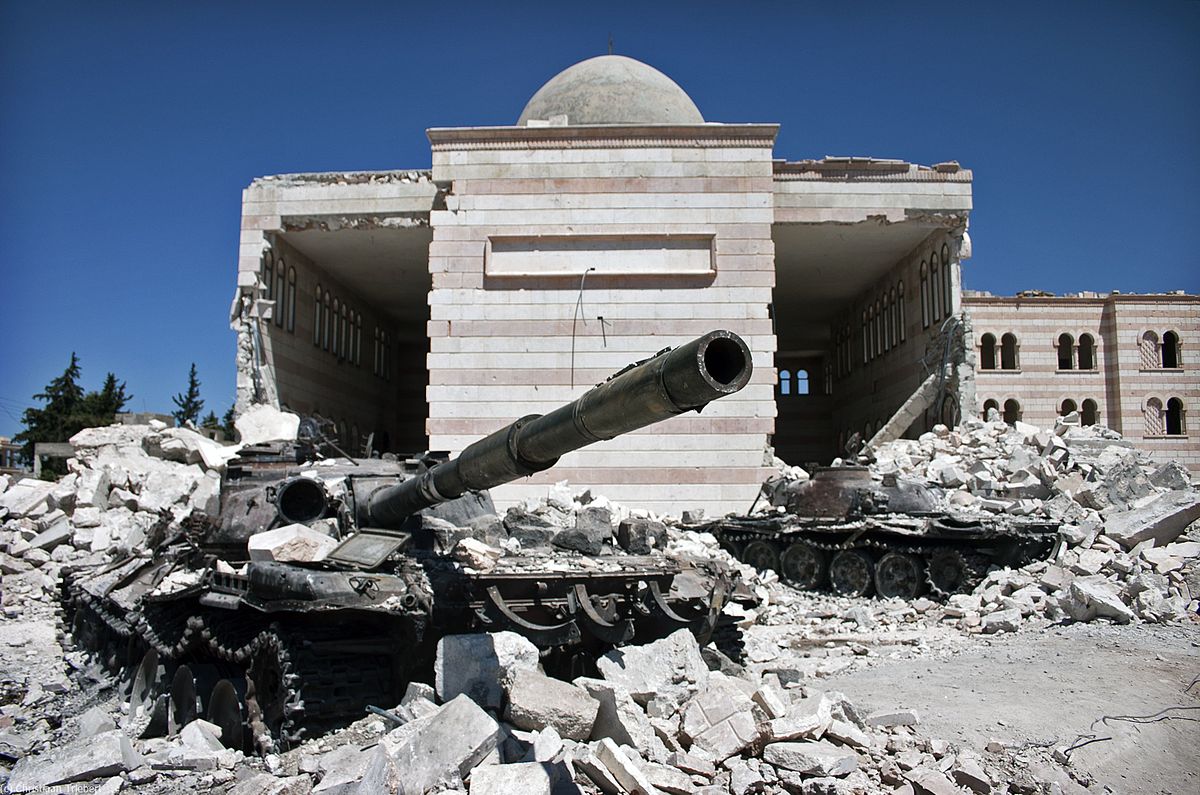 As with many bonapartist regimes, Putin relies heavily on playing up the external enemy. He needs successful wars to keep going / Image: Christiaan Triebert
As with many bonapartist regimes, Putin relies heavily on playing up the external enemy. He needs successful wars to keep going / Image: Christiaan Triebert
As Putin came to power, he started cleaning up the worst of the excesses of the Yeltsin years. He imprisoned some of the oligarchs, and broke up some of their control of the media. Of course, not to hand it over to the workers, but to his own cronies, or into his own control. But such moves to punish the oligarchs were very popular at the time.
The Western powers assumed, quite wrongly, that Russia would return to capitalism as a colony of the West: a return to Russia of pre-1917. That's essentially what they achieved in much of Eastern Europe. But the new Russian oligarchy had its own interests, and was starting to find its confidence. Russia re-emerged on the scene of world politics, not as a poor, impoverished nation but as an imperialist power, hungry to reclaim its spheres of influence that had been lost with the collapse of the Soviet Union.
This wasn’t some personal mission of Putin’s either. Yeltsin very much agreed with the subjugation of Chechnya and he also suggested that the former Soviet Republics might have their borders redrawn (in Russia's favour). The new Russian oligarchy was starting to find its self confidence, and with the subsequent years' upturn in the economy, this confidence grew.
The regime was refashioning itself. Nothing fundamental was changing but something had to be done to remove the ghastly image of the Yeltsin years. Gone was the slavish following of the dictates of the IMF and Washington. Putin of course wasn't prepared to abolish capitalism but he was quite keen to rehabilitate Russia's great power status. After a decade of national humiliation, this was popular.
The Soviet national anthem was re-adopted in 2000, with new lyrics, despite the opposition of people like Yeltsin who argued that one shouldn't blindly follow the whims of the masses (a tacit recognition that the anthem was popular). Putin also keeps talking about the Soviet Union, including Lenin and Stalin, in positive words. But, of course, he also mentions some of the Tsars in similar terms.
However, ideas somehow have to correspond with reality. Putin claimed to represent a change to Yeltsin, and the superficial changes he made would have been quite insufficient, if they hadn't also been combined with a boom in the economy. Putin didn't just talk the talk, but when he talked about reviving Russia, it was also noticed in the economic situation. Of course, that didn't have much to do with him, but with the change in the fortunes of oil prices. About 60 percent of Russia's exports are oil and gas products.
This combination of the disaster of the Yeltsin years, and the subsequent economic recovery of the early 2000s gave the new regime a semblance of stability. The working class had been demoralised and atomised, first by the years of Stalinism under the Soviet Union, then by the disastrous role of the CPRF in the movement 1996-1998. This was another important plank of both the economic recovery and Putin's regime.
As with many bonapartist regimes, Putin also relies heavily on playing up the external enemy. He needs successful wars to keep going. The war in Chechnya was such an instance, where he brutally crushed the Chechens. Then he crushed the Georgian army in 2008, followed by the war in the Ukraine in 2014, then by the war in Syria in 2015-16.
Yet, these attempts to gain popularity by whipping up nationalism are having less and less of an effect. And it's very costly. Russian military expenditure is now higher than the US as a share of GDP, at 3.9 percent, which is more than twice that of the UK.
The Putin regime is living on borrowed time. Putin used to poll 60-70 percent and now he's down to 40 percent. There never was such a thing as a free election in Russia, but the last parliamentary election was more fraudulent than most. Persecution has intensified, as has the vote rigging. Maybe as much as half of the 28 million votes of Putin’s United Russia party were fake. In 2007, at the height of Putin’s popularity, United Russia won 315 seats, with 49 percent of the vote. This year, the opinion polls gave United Russia 35 percent. Yet they still got 50 percent in the elections, enough to secure 324 seats, which happens to be just 4 seats more than the required two-thirds majority required for constitutional changes. Clearly, the regime ensured that they got just enough votes to secure this number.
In a normal bourgeois democracy, elections and protests are like a kind of safety valve, where the various parties rise and fall in popularity as the mood, particularly among the working class, changes. Election results and strike figures are like a barometer whereby one can judge the mood of the class. When it comes to a regime like that of Russia, that is much more difficult. It is made all the worse by the uselessness of the parliamentary opposition. The repression and fraud pushes the discontent under the surface, but it only means that it will emerge all the more explosive when it does come.
Given the crisis that is taking place on a world scale and the disaster that Russia finds itself in, the time for such a reckoning is not far away. However, the solution can not be more of the same misery, but with a democratic mask. The complete failure of the liberal opposition shows precisely this. No one is interested in the lackeys of US imperialism, or a return to the Yeltsin years. Nor is it possible or desirable to turn the clock back 30 years and reintroduce a bureaucratically mismanaged economy. The workers are looking for a genuine alternative. This must inevitably mean a return to the ideas of the October Revolution. This remains the only way forward.

